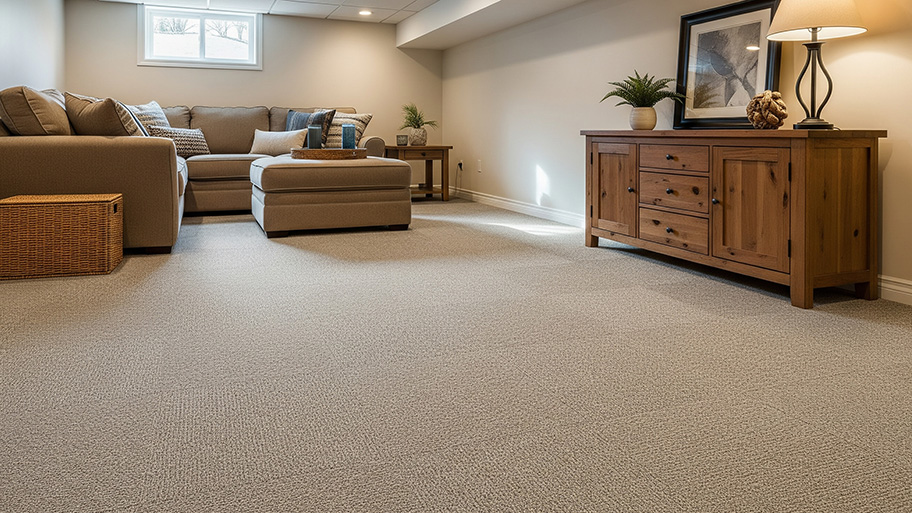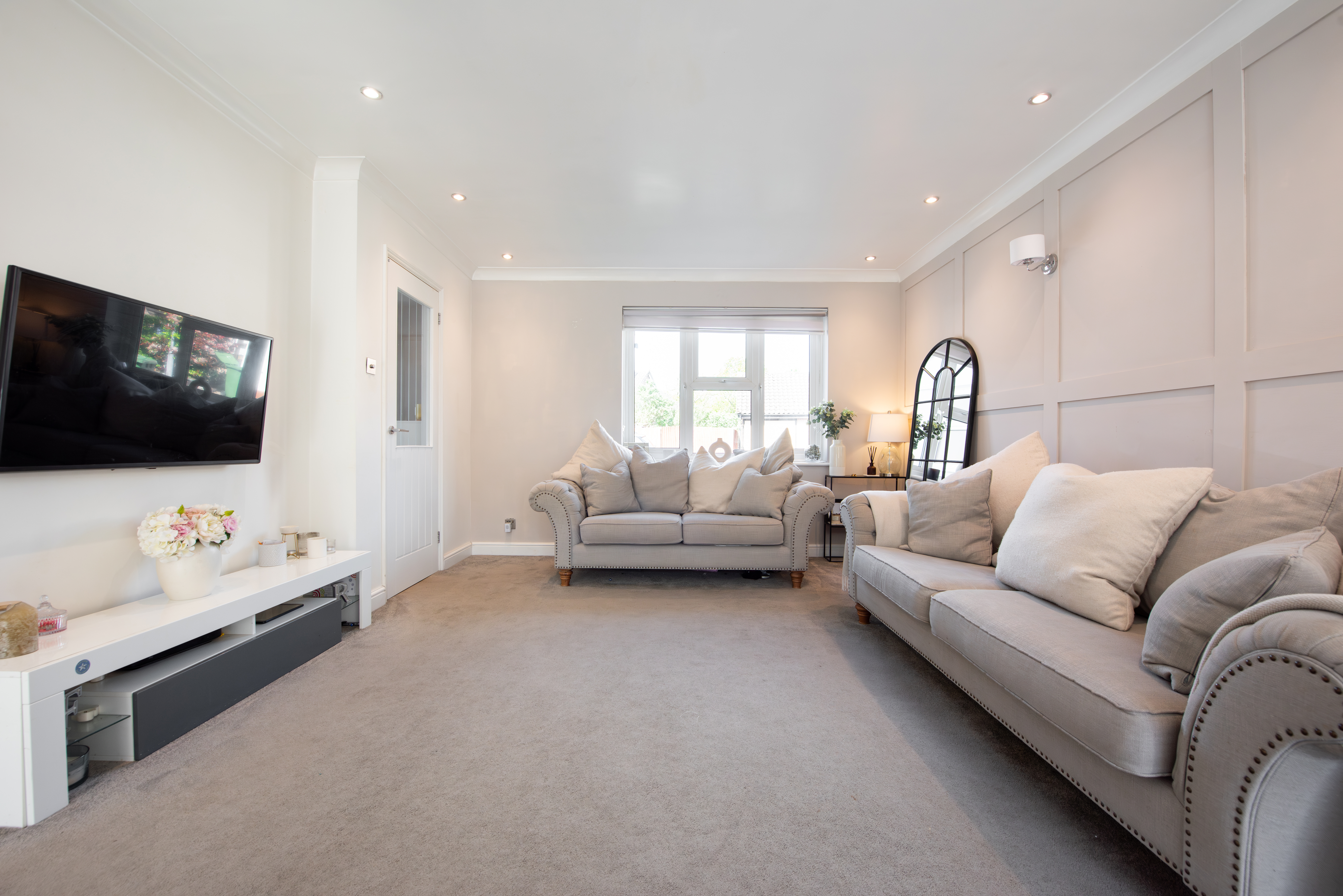
Carpet padding makes your carpet feel extra comfortable and protects your floors from damage, but how much does carpet padding cost? Let’s look at the numbers.
It just takes a long weekend to totally change up the look of your carpet


Maybe you’ve bought a new house, and the carpeting isn’t exactly what you would’ve chosen—but replacing it all simply isn’t in the budget right now. Perhaps you have kids who leave a trail of juice spills behind them or dogs or cats who consider the carpet their lawn. No matter your reasoning for needing a carpet glow-up, dyeing your carpet is an easy way to make it look new in a matter of a few days.
Before you pick up your supplies, here’s everything you need to know about how to dye carpet.

The first question you need to answer is can I dye my carpet? The answer is entirely dependent on the material. Carpet dyeing works best when you have carpet made from nylon, wool, or silk; it is not, however, an option for thicker carpet fiber, like polyester, that won’t absorb the dye evenly.
If you have red wine stains or other dark sections of the carpet that a dye won’t cover—or the fiber isn’t conducive to dye in the first place—you could consider adding a large area rug or two, or removing the carpet if you don’t mind the carpet removal costs.
Before carpet dyeing, it’s important to prepare the room. Since you’ll need to deep clean the carpets, you should remove all furniture from the room. Also, be sure to cover any permanent items in the room that the carpet dye could damage.
Once you know your carpet is a good candidate for dye, you can proceed with the step-by-step dyeing process. What carpet dye you use will come down to your budget and color preference, though you need to be sure to use actual carpet dye (versus a fabric dye). There are thousands of carpet dye colors from which to choose, but you’re limited by your carpet’s current shade.
While you can go over a light carpet with a darker dye color, you cannot reverse the process. So if your carpet is, say, red, and you want to transform it to a lighter shade like a beige, you’ll need to consider replacing the carpet entirely instead of simply dyeing it. If you’re covering substantial stains, it’s imperative you pick a dark enough dye that will sufficiently mask any trouble spots you’re trying to hide.
Cleaning your carpet is vital before using carpet dye. If the carpet is dirty, the dye may not take; if it does, it could have an uneven appearance. You can DIY carpet cleaning by renting equipment, or you can hire a carpet cleaning pro to handle it. Consider cleaning the carpet several hours before dyeing it.
The carpet should be slightly damp when you dye it. If you cleaned it in the morning, you could dye it late afternoon/early evening. If you do carpet dyeing the day before, you may need to dampen the carpet slightly when ready to dye.
After you have your dye color chosen—or at least narrowed down to a few options—you’ll want to test it out on a small section. Before you commit to covering your entire carpet in dye, make sure you don’t need to add more color or, conversely, dilute it to lighten up the hue. Test the dye in a spot, perhaps, behind your couch, that you can easily hide if things don’t go as planned.
The dye you buy will have instructions on the bottle, but you’ll likely need to mix it with hot water as well as a pH Stabilizer that comes with the kit you purchase. Wear gloves to protect your skin from coming in contact with the dye, and prepare the dye in a space that has been covered by cardboard, newspaper, or a drop cloth to avoid errant droplets from staining your floors.
Since you need to keep the mixture at a high temperature—the water should remain between 160 and 180 degrees Fahrenheit—apply the dye immediately after mixing with water and only work with a small amount of it at a time. You should also be sure the room is well ventilated.
Start by coating a section of the carpet evenly with water, preferably with a light mist from a spray bottle or pump sprayer. This step will ensure uniform absorption by creating a thin layer on top of the old carpet. Then, add the dye with a sprayer, closely following the instructions on the bottle.
A carpet rake is an essential tool when learning how to dye carpet. This inexpensive tool will help the dye spread evenly throughout the carpet and produce a seamless appearance. Raking the carpet also pushes the dye further into the carpeting for deeper penetration.
Once you’ve fully covered the entire carpet with one coat of dye, you’ll repeat the process at least once more, as you’ll need to add two to three coats to complete your carpet dye job. After the first coat is dry, apply a second coat, let it dry, then determine if your carpet needs a third.

Before moving your furniture back into the room, the last step is letting the carpet fully cure. Depending on ventilation and humidity, your carpet could take one to three days to completely dry. You can walk on it at this time, but wait until it’s no longer damp before moving the furniture back into the room.
Even though carpet dyeing can be a straightforward DIY project, there are a few common mistakes that can turn it into a frustrating mess. Here’s what to watch out for:
Skipping the deep clean: If your carpet has any dirt, oils, or residue on it, the dye won't penetrate evenly or even at all in some spots, and you'll end up with a blotchy, uneven color. Take the time to steam clean your carpet thoroughly and let it dry properly.
Choosing the wrong dye type: Carpet fibers need specific formulations to absorb color properly. Using the wrong kind of dye will leave you with poor coverage and color that washes out quickly.
Going too light or trying to lighten a dark carpet: You can only go darker with carpet dye, never lighter. In other words, you can’t turn a burgundy carpet beige—the dye will either not show up at all or create a muddy, uneven mess.
Rushing the application process: It can be tempting to apply a thick coat and call it a day, but this approach will give you streaky results. Take your time with thin, even coats, and don't skip the raking step between applications.
Moving furniture back too soon: Your carpet might look dry on the surface, but it can take up to three days to fully cure. Moving heavy furniture back too early can leave permanent indentations or cause the dye to transfer onto furniture legs.
Take your time with the process, and you’ll end up with professional-looking results for years to come.
Carpet dyeing is a DIY job you could fairly easily handle on your own, assuming you have the time and patience to follow the instructions. However, if you simply aren’t into DIY or are nervous about dyeing your precious floors, a local carpet dyer will be able to do the job for you quickly and professionally.
Tools and supplies to dye your carpet will run you between $100 and $200, while hiring a pro to dye your carpets will cost around $585. However, if you have the tools on hand, you’ll only need a carpet dyeing kit, which will run you around $50 to $100.
From average costs to expert advice, get all the answers you need to get your job done.

Carpet padding makes your carpet feel extra comfortable and protects your floors from damage, but how much does carpet padding cost? Let’s look at the numbers.

The cost to carpet stairs depends on the number of stairs, material choice, and staircase type. Read on to calculate your project expenses

Not only are carpet tiles easier to install than carpet, but they’re often more affordable. So, how much does carpet tile installation cost? Let’s take a look.

Dealing with damage from a leak or flood? We’ll walk you through how to get water out of carpet and prevent mold damage in 7 easy steps.

Rugs and carpets play different but important roles as flooring options in your home. Here’s what to think about when comparing these two popular options.

Your carpet’s pile type impacts comfort, price, and ease of cleaning. Learn about low-pile versus high-pile carpet and when to choose each.